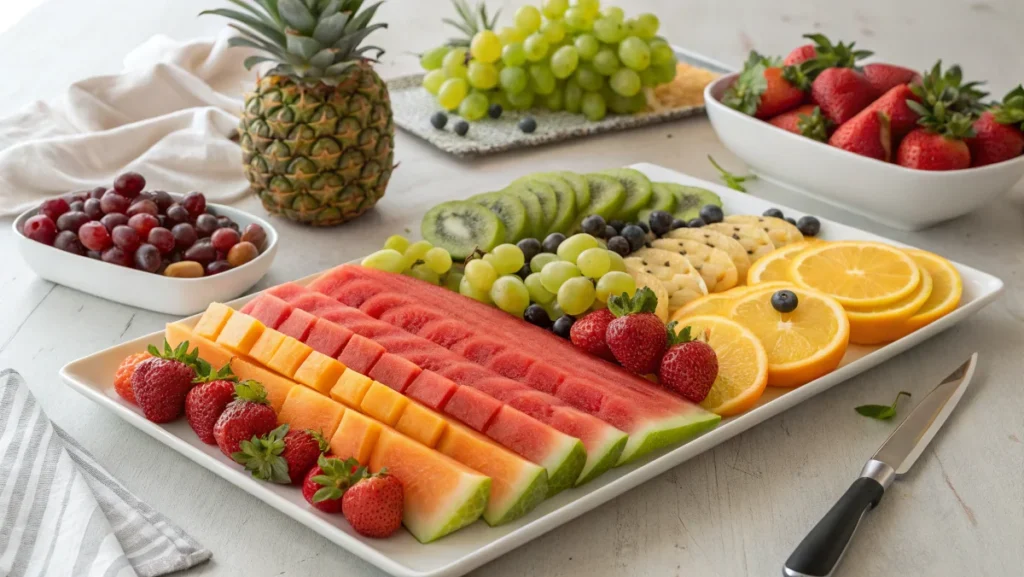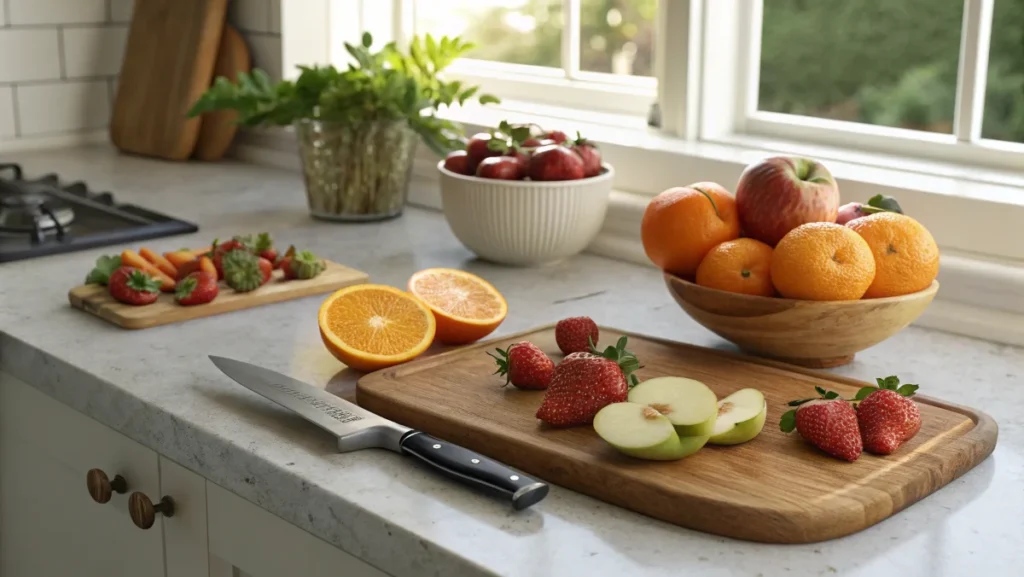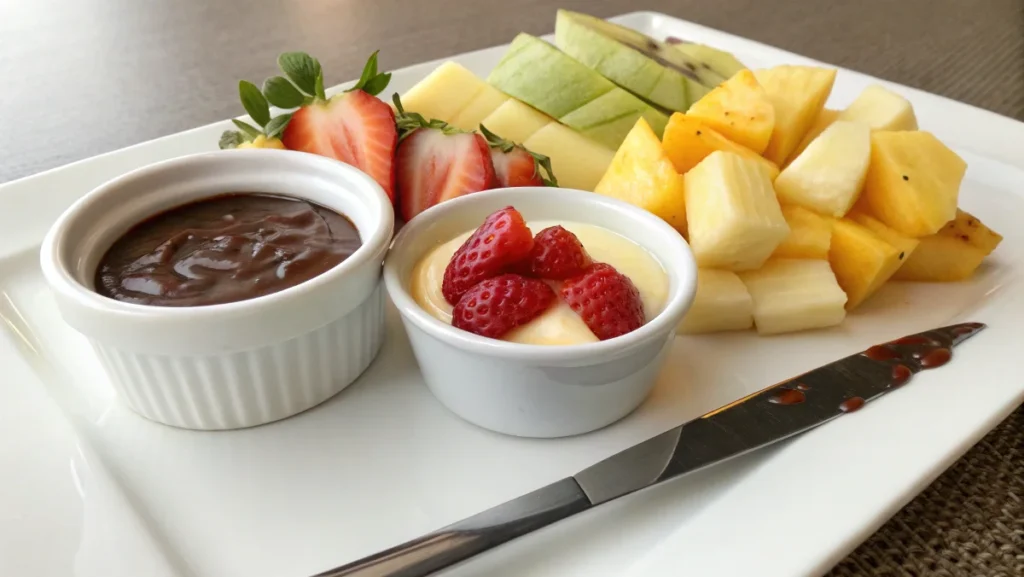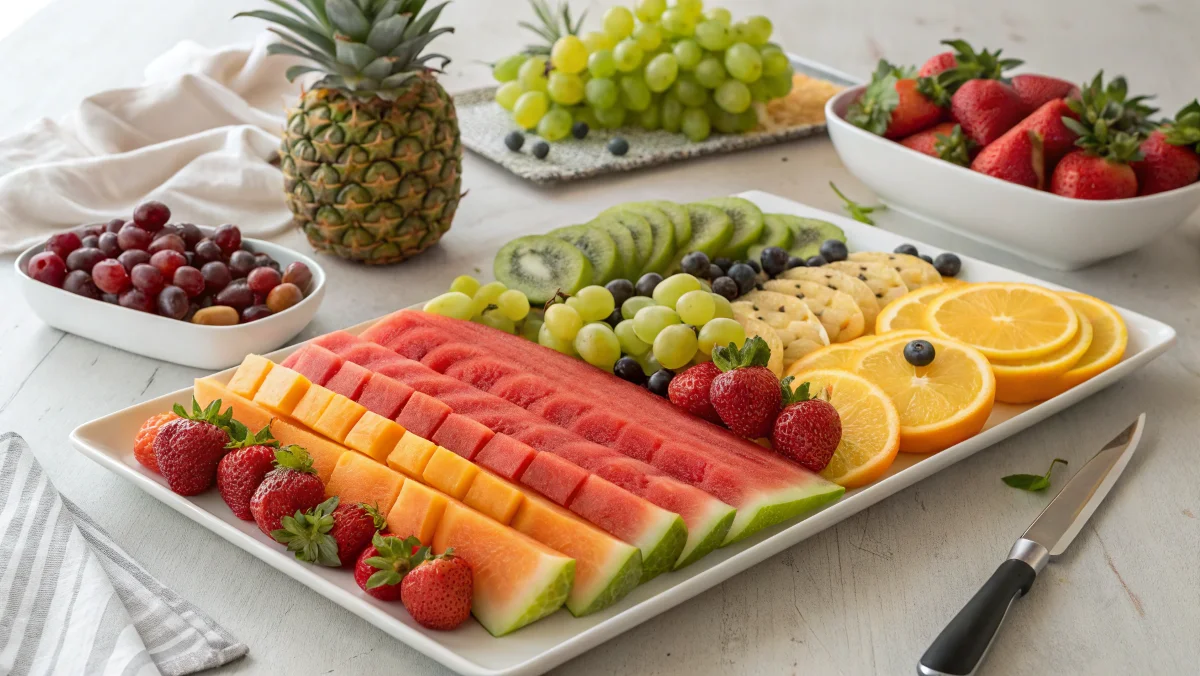Knowing how to prepare a fruit tray may seem simple, but when done right, it can be a stunning centerpiece for any event. Whether for a family gathering, party, or special occasion, a well-made fruit tray is both eye-catching and delicious. This guide will show you how to prepare a fruit tray that’s visually appealing and sure to impress your guests. And for those who love adding unique twists to their culinary creations, you can explore exciting ideas like how to make bubble waffles at home to complement your fruit tray and make your presentation even more creativ

Selecting the Best Fruits for Your Tray
When preparing a fruit tray, the selection of fruits is one of the most crucial steps. The fruits you choose should not only complement each other in flavor but also in texture and color.
Start by considering a variety of fruits with different shapes, textures, and colors. Some fruits are naturally sweet, like grapes and pineapple, while others, such as kiwi or strawberries, offer a tart contrast that adds complexity to the flavor profile.
Here’s how to choose the best fruits for your tray:
- Popular fruits: Apples, oranges, bananas, and berries are all great choices.
- Seasonal fruits: Opt for mango, watermelon, or stone fruits during the warmer months.
- Texture variety: Include fruits like grapes (small and juicy), apples (crunchy), and melon (soft and watery).
Ultimately, the best fruits will be fresh, in-season, and easy to prepare. With this in mind, you can create a tray that is both flavorful and vibrant.
Preparing Fresh Fruits for Presentation
Now that you’ve selected your fruits, the next step is to prepare them for presentation. Proper preparation ensures that the fruit is not only delicious but also easy to serve and eat.
Here are some tips for preparing your fruits:
- Wash thoroughly: Rinse each piece of fruit carefully under cold water to remove any dirt or pesticides.
- Peel and core where necessary: Certain fruits, such as apples and pears, may need to be cored and peeled.
- Slice uniformly: For a professional presentation, slice fruits into similar sizes and shapes. This consistency helps with the overall appearance of the tray.
- Remove seeds: Be sure to remove seeds from fruits like melons or grapes to avoid discomfort while eating.
By taking these simple steps, you can elevate the presentation of your fruit tray while ensuring it’s both visually appealing and easy to consume.

Balancing Colors for Visual Appeal
When arranging fruits on your tray, color plays a vital role. Not only does it make the tray look inviting, but it also adds a sense of harmony.
To balance colors effectively:
- Use a variety of colorful fruits like red strawberries, yellow pineapples, green kiwis, and purple grapes.
- Aim for a mix of warm and cool colors. For example, pair orange cantaloupe with blueberries or green apples with red strawberries.
- Consider the color contrast to make certain fruits stand out. The deep green of kiwi slices will contrast beautifully with the bright orange melon or the vibrant grapes.
By carefully selecting fruits with a variety of colors, you’ll ensure that the tray has a dynamic and eye-catching appearance that’s sure to impress your guests.
Choosing Seasonal Fruits for Freshness
Seasonal fruits are always the best choice when you prepare a fruit tray. Not only are they fresher and tastier, but they are also more affordable and readily available.
Incorporating seasonal fruits into your tray will ensure that it remains fresh and vibrant. For example:
- Winter: During the colder months, opt for fruits like oranges, pomegranates, and apples.
- Spring and Summer: Include berries, watermelon, mangoes, and pineapple.
- Fall: Consider fruits such as grapes, pears, and figs for a cozy, autumn-inspired tray.
In addition to enhancing freshness, seasonal fruits often add unique flavors and textures, making your tray even more special.
Cutting Fruits into Perfect Shapes
The way you cut fruits can drastically affect the overall appearance of your tray. Neatly cut pieces look more appealing and easier to handle. For example, slices of melon, kiwi, or mango should be uniformly shaped and easy to pick up.
To cut fruits into perfect shapes:
- Use a sharp knife or fruit slicer for clean cuts.
- Opt for simple shapes like triangles, wedges, and circular slices.
- Consider using a melon baller for scooping small, round balls of fruit like melon and watermelon.
- For fruits like grapes or berries, simply wash and leave them intact for ease of consumption.
These small details will make a significant difference in the presentation of your fruit tray.
Arranging Fruits for Maximum Impact
The arrangement of fruits on the tray is just as important as the selection of fruits themselves. A well-arranged tray will be visually appealing, making it the center of attention at any gathering.
Here’s how you can arrange fruits for maximum impact:
- Layer your fruits: Start with the larger fruits at the base of the tray and layer smaller fruits on top.
- Create symmetry: Organize the fruits in circular or fan patterns for a balanced, harmonious look.
- Leave space: Ensure that there is enough space between different types of fruit to allow each one to shine.
By following these guidelines, you’ll achieve a tray that’s not only attractive but also functional, with each fruit easily accessible.
Prepare a Fruit Tray: Adding Dips and Sauces for Extra Flavor
To make your fruit tray even more irresistible when you prepare a fruit tray, consider adding a variety of dips and sauces that pair well with your fruit selection.
Some popular dip options include:
- Yogurt dips: Flavored yogurt, such as honey vanilla yogurt, pairs wonderfully with strawberries and apples.
- Chocolate sauce: Rich, melted chocolate makes for a decadent dip for bananas and berries.
- Cream cheese dip: A tangy cream cheese dip can complement sweet fruits like pineapple and grapes.
Offering a selection of dips and sauces will add extra dimension to your fruit tray and allow guests to customize their snack experience.

Using Garnishes to Enhance the Tray
Garnishes are a simple yet effective way to elevate the appearance of your fruit tray. Adding just a few small details can make your tray look more polished and elegant.
Here are some garnishing ideas:
- Mint leaves: Fresh mint sprigs not only add a pop of green but also a refreshing aroma.
- Edible flowers: Marigold or violet flowers can make your tray look sophisticated.
- Citrus zest: Sprinkle lemon or lime zest over certain fruits for added flavor and color contrast.
These small touches can help transform a basic fruit tray into an eye-catching centerpiece for any event.
Storing the Fruit Tray Before Serving
Once your fruit tray is assembled, you need to store it properly to keep the fruits fresh until serving time. Proper storage ensures the fruit retains its flavor, texture, and appearance.
To store your fruit tray:
- Cover the tray: Use plastic wrap or a lid to cover the tray and protect it from drying out or absorbing other odors.
- Refrigerate promptly: Keep your fruit tray in the fridge, especially if you’re preparing it ahead of time. Refrigeration slows down the ripening process.
- Avoid soggy fruit: To prevent excess moisture, consider placing a paper towel underneath the fruit tray to absorb any liquid released by the fruit.
By following these tips, you’ll be able to preserve the freshness of your fruit tray.
Choosing the Right Tray and Accessories
Selecting the right tray and accessories is essential when you prepare a fruit tray to showcase your fruit selection. The tray should be large enough to accommodate all the fruits while providing enough space for easy access.
Here’s what to look for:
- Size: Choose a tray that can comfortably hold all your fruits without overcrowding.
- Material: Wooden or glass trays often have a sophisticated, elegant look, while plastic trays are practical for casual events.
- Additional accessories: You can add small bowls for dips, toothpicks, or even decorative elements like candles or napkins.
The right tray and accessories can help elevate the entire presentation of your fruit tray.
Serving Tips for a Stunning Fruit Tray
When it comes time to serve your fruit tray, make sure it’s presented in the best possible way to impress your guests. Consider the following serving tips:
- Serve chilled: Cold fruits are always more refreshing, so keep your fruit tray chilled right before serving.
- Provide serving utensils: Ensure guests have access to tongs or small forks to easily pick up fruits.
- Interactive serving: For a fun twist, offer guests the option to build their own fruit skewers from the tray.
These tips will ensure that your fruit tray is both beautiful and functional.
FAQs: How to Prepare a Fruit Tray
How to prepare a fruit tray?
Preparing a fruit tray is a fantastic choice for any occasion, whether it’s a party, picnic, or simply a healthy snack. Start by selecting a variety of fresh, seasonal fruits. Common fruits for a fruit tray include grapes, strawberries, oranges, watermelon, melon, pineapple, apples, and bananas. Make sure to wash all the fruits properly, peel or slice them as needed. Cut the fruits into uniform pieces and arrange them aesthetically on a large platter, grouping them by color and texture for a visually appealing display. You can add decorative touches like fresh mint leaves, edible flowers, or herbs to enhance the presentation. For a contrast of flavors, you might consider adding tropical fruits like mango or papaya. If you’re looking for an additional healthy option to complement your fruit tray, consider trying these delicious Cottage Cheese Pancakes, which pair wonderfully with fresh fruits.
Can you prepare a fruit platter the night before?
Yes, you can prepare a fruit tray the night before, which is especially helpful when hosting an event or gathering. To keep the fruits fresh, make sure to store the platter properly after assembling it. Once you’ve cut and arranged the fruits to prepare a fruit tray, cover the platter with plastic wrap or store it in an airtight container, then refrigerate it until ready to serve. Some fruits, like apples and bananas, may brown quickly, so it’s a good idea to lightly coat them with lemon or lime juice to prevent oxidation. If you prefer, you can also cut the fruits just before serving to preserve their freshness and texture.
How do you keep fruit fresh on a platter?
To keep fruit fresh on a platter, here are a few tips:
- Refrigerate: Keep the platter in the refrigerator until serving time to maintain the fruits’ freshness. Cold temperatures will help prevent wilting and dehydration.
- Use lemon juice: To prevent browning, coat fruits like apples, pears, and bananas with a bit of lemon or lime juice. This slows down oxidation and keeps the fruit looking fresh.
- Plastic wrap or airtight container: If you prepare the fruit tray ahead of time, cover it tightly with plastic wrap or store it in an airtight container to keep the fruit from drying out.
- Absorb excess moisture: Place a paper towel or absorbent sheets underneath the fruit to catch any moisture, helping to prevent sogginess.
What normally comes on a fruit tray?
A typical fruit tray includes a variety of fresh, colorful fruits. Common choices are grapes (green or red), strawberries, slices of melon (cantaloupe, watermelon), fresh pineapple, oranges or clementines, and apple or pear slices. You can also add tropical fruits like kiwi, mango, papaya, or passion fruit for a fascinating touch.Softer, creamier fruits like bananas, peaches, and apricots are also great additions. To enhance the flavor, consider adding a small dipping sauce on the side, such as plain or vanilla yogurt, melted chocolate, or honey. Depending on the occasion, dried fruits like raisins or figs may also be added to diversify the platter.
Conclusion: How to Prepare a Fruit Tray
In conclusion, preparing a fruit tray involves a combination of thoughtful selection, creative arrangement, and attention to detail. By considering factors like seasonal fruit, color balance, and texture variety, you can craft a stunning fruit tray that will delight your guests and complement any event. Whether you choose to add dips, non-native fruits, or garnishes, the possibilities are endless. By following this guide, you’ll confidently be able to answer the question, what does a sweet potato pie taste like?—and you’ll do so in style.

